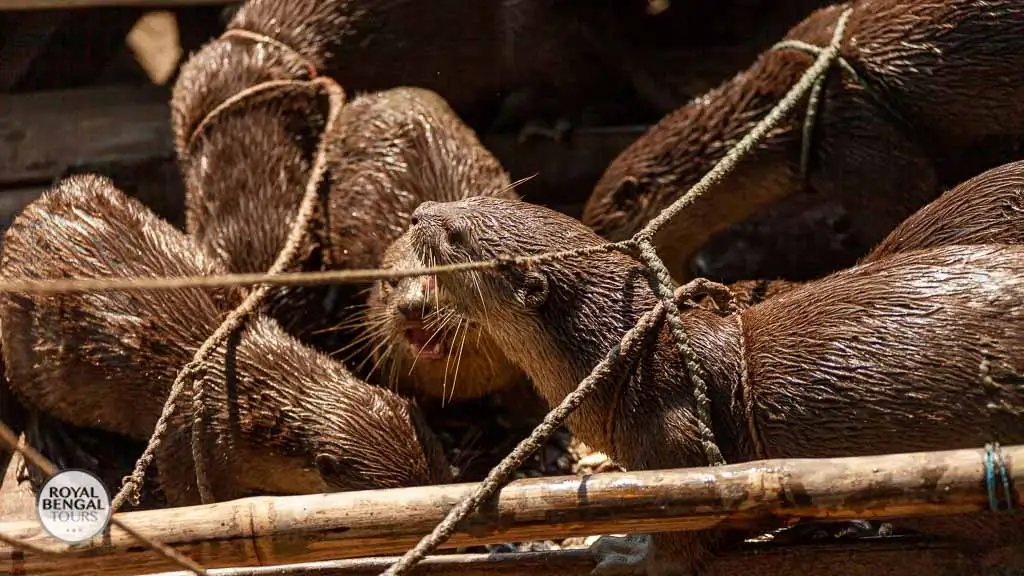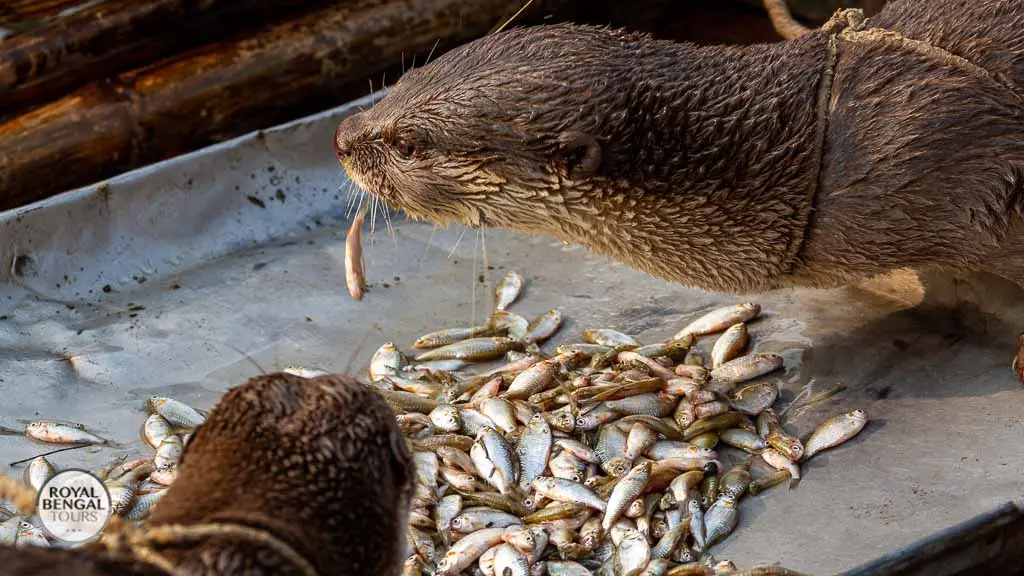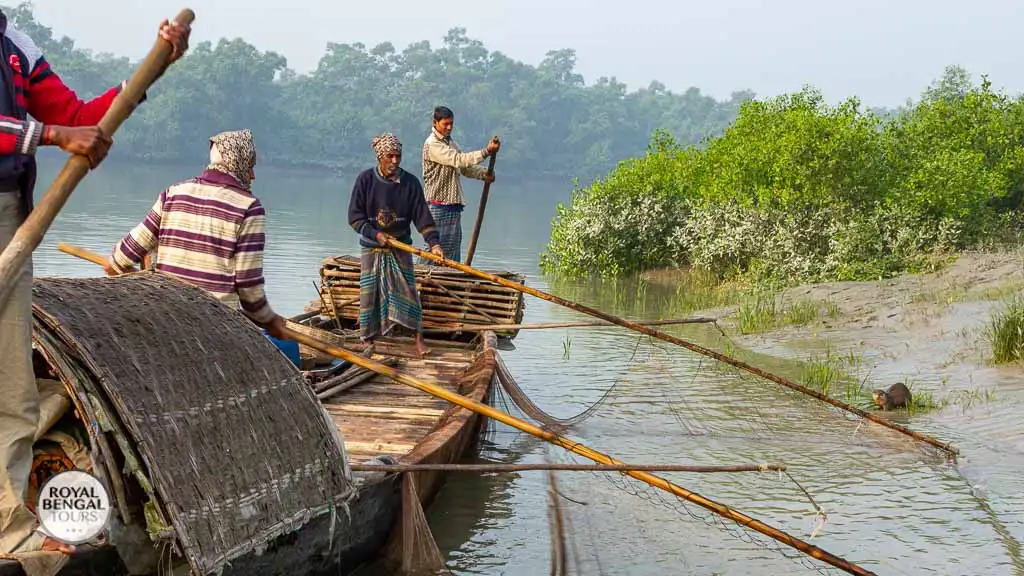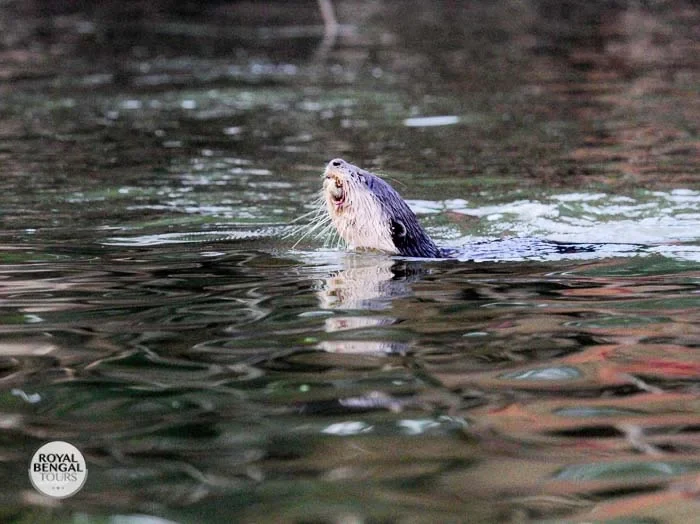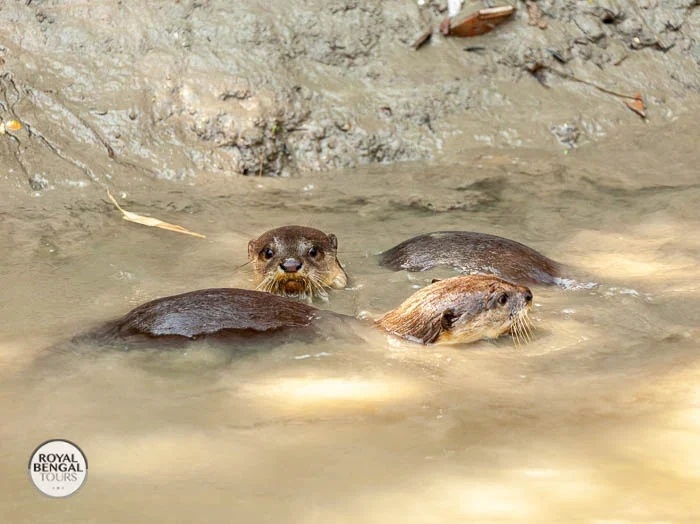Otter Fishermen’s Socioeconomic Situation
These fishermen depend entirely on otter fishing for their living. They don’t do farming, agriculture, or business. Without daily otter fishing, they can’t meet their fundamental needs. Unfortunately, when there is heavy rain, flooding, or storms, they can’t fish and confront economic hardship.
Fish weight ranged from 4 to 12 kg in one night. Several species of fish are caught in rivers outside the Sundarbans. But shrimp are largely caught in the Sundarban area. Otter fishing captures more fish in one night than any other method. One night’s shrimp catch weighed 2 to 7 kg. Shrimp is more profitable than other fish in the Sundarbans. Fishing group members share their daily earnings.
Many people indirectly benefit from traditional fishing through transportation, net-making, boat-building, etc. This unique fishing method is more profitable than others. It involves less labour, less physical exertion from the fisherman, and a minimum financial commitment.
Unfortunately, this unique traditional fishing technique is at risk. Only a decade ago, more than 500 Otters were used for fishing, with 5000 people involved in five different regions. This ancient practice is declining for several reasons. This includes the otter fishermen’s low finances. When fishing in the Sundarbans for four months, these fishermen need major financial support, and most can’t afford it. So they count on high-interest money lenders. The Malo Jeles are a minority group. They have trouble getting land, don’t get fair treatment or help from society, and face violence and discrimination. All these social forces are hurting traditional fishing. Fish abundance is diminishing due to pollution from plastic, cotton dyeing, and other industries, over-sedimentation in the river, and indiscriminate fishing by other fishermen. Aside from these problems, the fishermen have to compete with many other local fishermen for fishing spots, especially those using machines to catch fish. Conflict with local authorities over taxes and fishing authorization, robbery in Sundarban areas, diseases in fishermen and otters, the high cost of basic needs, and population pressure also influence fishermen to quit.
Due to fisherman’s involvement with otters, this area has traditionally conserved the wild species. These tamed otters in captivity have a 90% breeding potential. Captive-bred populations can persist in the wild. This traditional method can help with ex-situ and in-situ conservation through reintroduction and rehabilitation. One of Bangladesh’s last native methods of conservation can be kept alive with the help of the government and national and international research groups.




